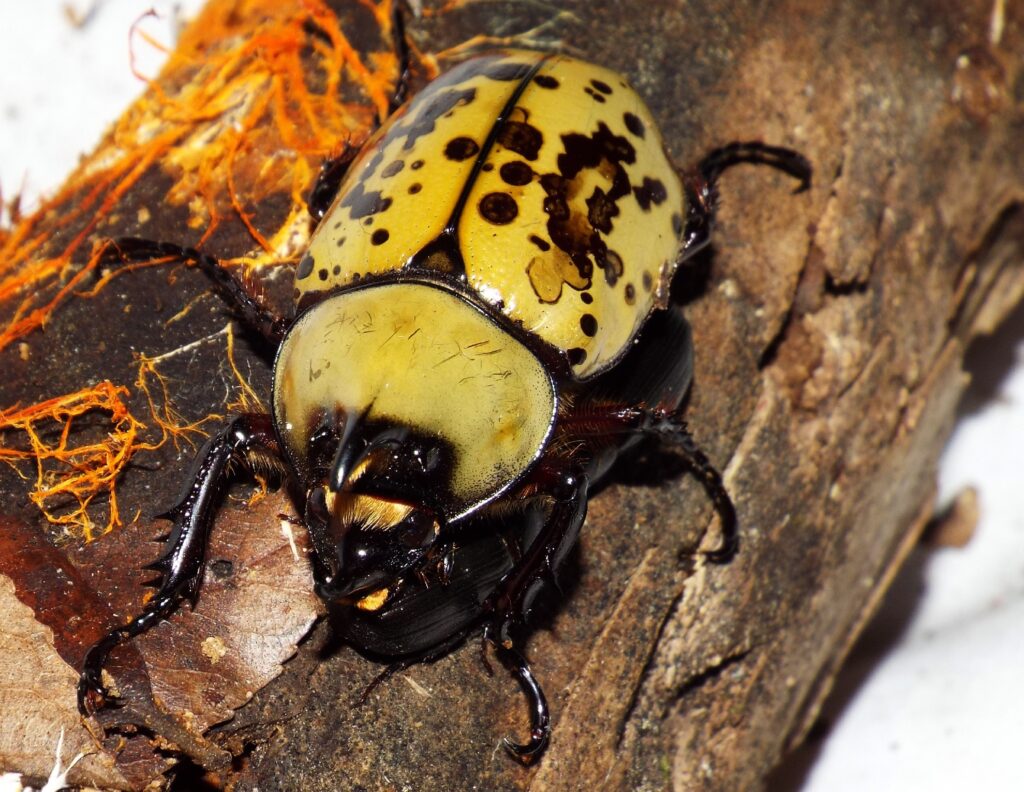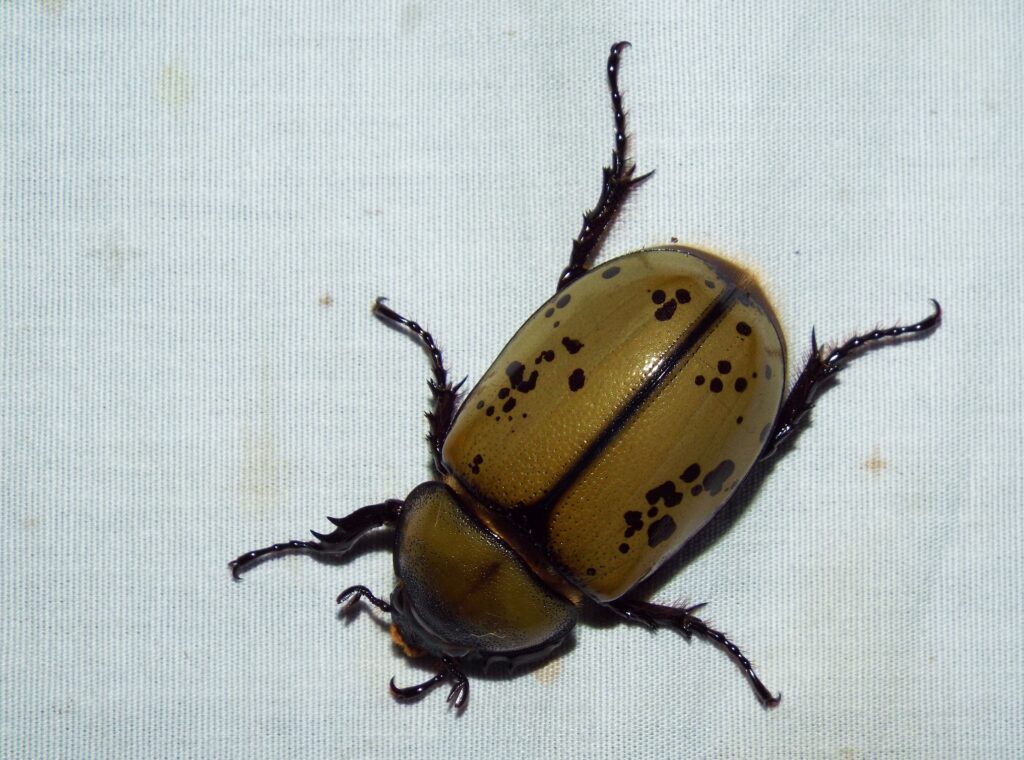


This week for Flora and Fauna Friday we have our biggest beetle. Today we’re talking about the Eastern Hercules Beetle (Dynastes tityus).
The Eastern Hercules Beetle is the heaviest Beetle in North America and this substantial insect measures over two inches long. Their glossy olive exoskeleton is ink spotted, trimmed black, and gilded with fringes of golden hairs. Their bulk is supported by thin, shining-black segmented legs. The oval body of the Hercules Beetle has considerable heft and volume for an insect. They’re a wonder to observe in the hand. Males of this genus are adorned with horned heads. His thorax is tall and elongated, forming a robust, hooked projection of the pronotum called a pronotal horn. A similar and reciprocal projection is found on the head. These paired projections create a facial pincer with a crab-claw-esque construction. Male Hercules Beetles use their horns to compete for mates against other males. Two males will lock horns and attempt to lift and suplex the other beetle, with their face. It’s a pretty radical lifestyle.
Eastern Hercules Beetles start life as an egg laid within the rotting log of a once mighty hardwood. That egg quickly hatches into a larva, called a grub. The grub grows quickly, reaching four inches in length during the two or more years it spends as a grub. The grub will pupate before metamorphosing into our substantial shiny summer beetle with a wrestling obsession. The Eastern Hercules Beetles, much like Pileated Woodpeckers, require mature and healthy hardwood forests to survive. They feed in the rotting logs of large hardwood trees and a steady supply of big dead trees is needed to maintain their population. Beetles as a whole are an important node in the forest food web. They decompose fallen logs, returning the nutrients trapped within to the surrounding environment and encouraging new plant growth. These beetles also serve as an important food for other wildlife. The grubs are a sought after delicacy for Raccoons and Woodpeckers.